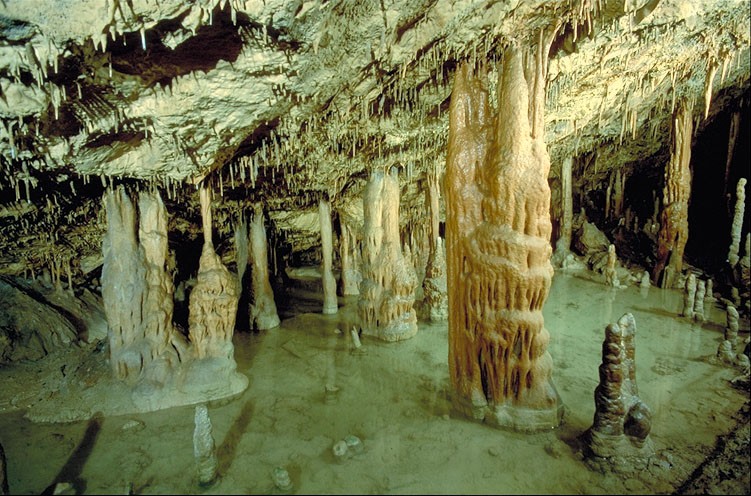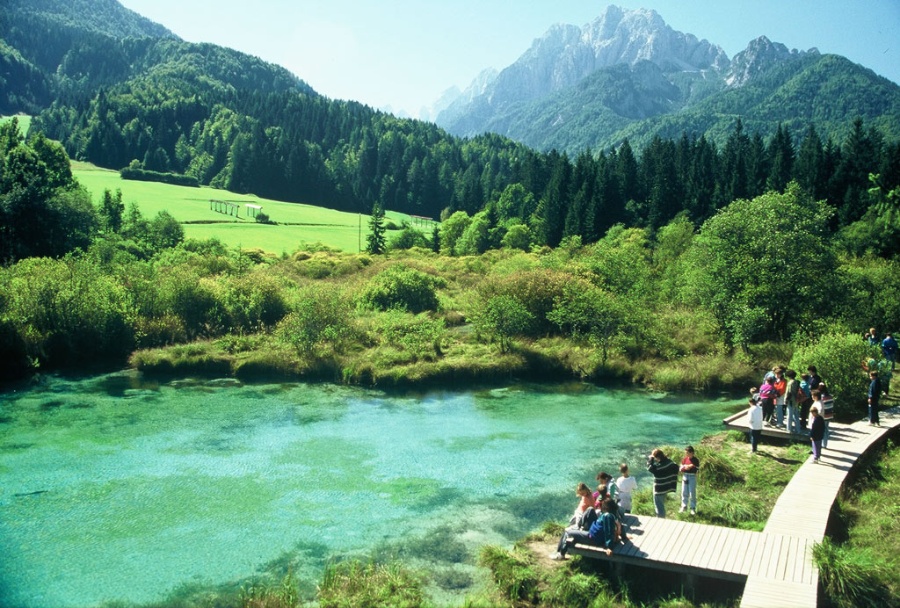

Sunny in climate and temperament, Slovenia is moving up the tourist hit parade. Rich in resources, naturally good looking and persistently peaceful, Slovenia has been doing just fine since its break from the former Yugoslavia in 1991. No longer the undiscovered, bargain gem that it was, Slovenia still remains a wonderful antidote to much of Europe's crowds and high prices.


Slovenia occupies about 2% of central Europe - 20,256 sq km (7817 sq mi) of land area - and it's about the size of Israel or Wales. To the north is Austria and to the south Croatia. Shorter borders separate Slovenia from Italy in the west and Hungary in the east. Slovenia is predominantly hilly, with more than 90% of its surface over 300m (984ft) above sea level. Forest covers almost half of the country (making Slovenia one of the world's 'greenest' countries) and agricultural land - mostly made up of fields, orchards, vineyards and pastures - covers a further 43%. There are six main regions within the country: the Alps; the pre-Alpine hills; the Dinaric karst (a limestone region of caves and underground rivers) below the hills; the Slovenian littoral, 47km (29mi) of Adriatic coastline; the flat Pannonian plain; and the lowlands, which make up around one-fifth of the country, mostly in the east and north-east. The interior is drained by rivers including the Sava and the Drava (which empty into the Danube), the Soca, which flows into the Adriatic, the Mura and the Krka. The Kolpa River marks much of the border with Croatia.

Capital: Ljubljana
President: Danilo Türk
Prime Minister: Borut Pahor
Government: parliamentary democratic republic
Time zone: GMT +1
Area: 20273
Population: 1935677
People: 83.1% Slovenian, 2% Serb, 1.8% Croat, 1.1% Bosniak, other 12%.
Currency: Euro (€)
Major industries: Textiles, manufacturing, timber products, agriculture
Major Trading Partners: EU (esp. Germany, Italy, France, Austria), Croatia
Daylight Saving: From last Sunday in March to last Sunday in October
Country Dialing Code: 386
Languages: A South Slavic language written in Roman alphabet and closely related to Croatian and Serbian.This is the preferred language of the young.
57.8% Roman Catholic, 10% none, 2.4% Muslim, 2.3% Eastern Orthodox Christian, 1% Protestant, 3.5% unaffiliated.

Tourism to Slovenia has taken off recently with the launch of cheap Easyjet and Wizz Air flights from western Europe to Ljubljana. Slovenia's national airline, Adria Airways, has nonstop flights between Ljubljana's Brnik airport (LJU) and practically every major city in Europe, as well as from Tel Aviv. There's a departure tax of 36.00 for passengers leaving by air, which is usually included in the ticket price. Buses travel between Slovenia and Italy daily, using Nova Gorica in Slovenia as the easiest exit and entry point. Koper also has good bus connections with Italy: some 17 buses a day go to and from Trieste, 21km (13mi) to the northeast. It's also easy to travel by bus to and from Hungary, Croatia, Austria and Serbia-Montenegro. The main train routes into Slovenia come from Salzburg (four to five hours away), Trieste (three hours), Vienna (six hours) and Zagreb (two to three hours). Trains between Amsterdam and Ljubljana take 18 hours. There are dozens of international border crossings if travelling by car, motorcycle, bicycle or even on foot. On weekends between mid-April and mid-October, it's possible to sail between Venice and Izola (one of Slovenia's Adriatic coast towns) by catamaran.

Except for long journeys, bus is the preferred way of getting around Slovenia. There are frequent departures and the network has an octopus' reach across the country. In some cases, there's no choice; travelling by bus is the only practical way to get to Bled and Bohinj, the Julian Alps and much of the coast from Ljubljana. You might need to make a reservation on Friday afternoons, when many students leave Ljubljana for the weekend. With the exception of the new ICS express train between Ljubljana and Maribor, travel by rail is best left to sightseers: one of the prettiest rides chugs through the Soca Valley. Driving a car can be a good way to get to some of the most beautiful and isolated towns and villages in Slovenia, and rental prices are reasonable. Rental agencies at Brnik Airport and in Ljubljana have the most competitive rates. The country's tolls and petrol prices are relatively inexpensive. Slovenians drive on the right.

Slovenia's coastal area has a Mediterranean climate, typical of the coastal regions of the Adriatic. While summer is quite pleasant and mostly dry with average highs usually just below 30° C (86° F), cold northeastern bora winds and heavy rainfall often detract from the appeal of an otherwise mild winter. Inland the eastern European climate takes hold. Central Slovenia's winters are cold, though while the sun is out the mercury is usually just above zero (32° F). Unfortunately the charming summer days that sit in the high 20° Cs (low 80° Fs) are often subject to significant downpours that continue for the rest of the year.

0 comments:
Speak up your mind
Tell us what you're thinking... !